To DIY or not to DIY, that is the question. Whether you want to make your own homemade salad dressing because it’s more delicious, cost-effective, or because you have control over the ingredients, having an arsenal of homemade dressing recipes at your fingertips will help. While I don’t always make my dressings homemade (more on that later), knowing how at leasts gives you the option and therefore control. So, that being said, here are 10 homemade salad dressing recipe to keep tucked away in your back pocket (or your browser’s bookmarks) to use when you see fit!
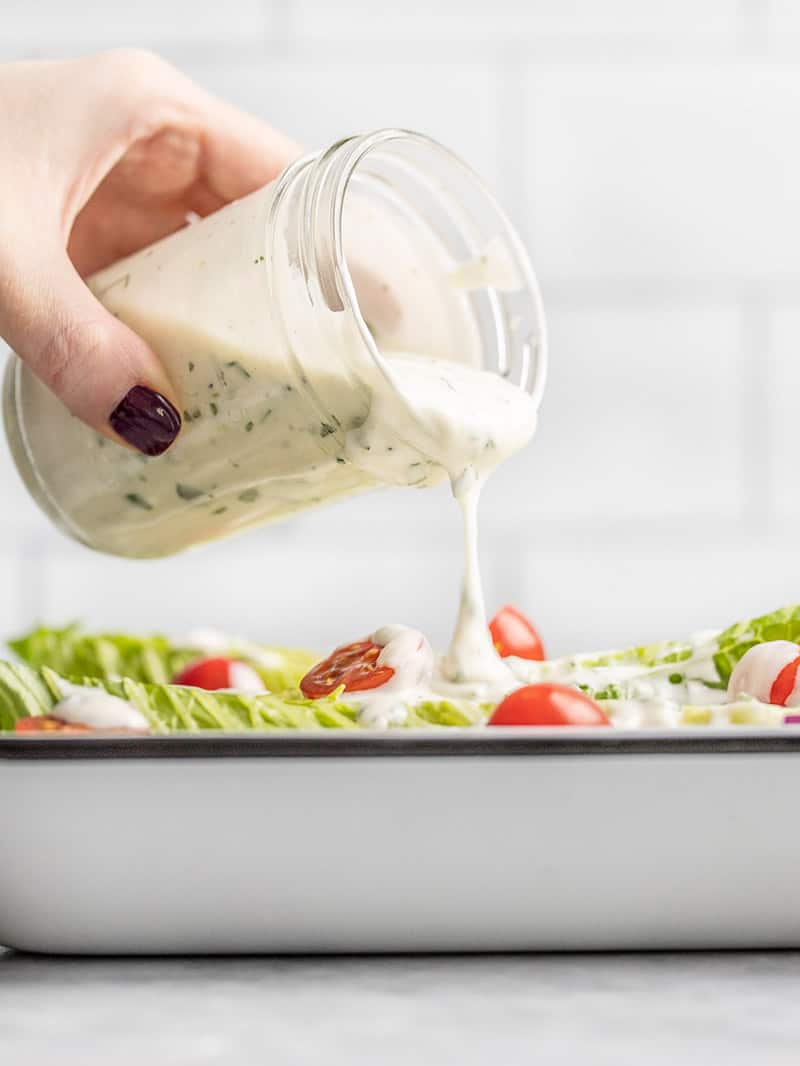
All recipes are rigorously tested in our Nashville Test Kitchen to ensure they are easy, affordable, and delicious.
Why Make Homemade Salad Dressing from Scratch?
Spoiler alert: I don’t always make my own salad dressing from scratch. Sometimes it makes sense to make it yourself, sometimes it doesn’t. I’ll quickly run through the advantages and disadvantages to help you decide when and why it will be beneficial to make your own homemade salad dressing, and when to buy store-bought.
Advantages of Homemade Salad Dressing:
- You control the ingredients – you can avoid preservatives, stabilizers, allergens, and control other ingredients like sugar, fat, or salt.
- It can be cost-effective – if you already have the ingredients on hand, you can avoid making an additional purchase.
- Fresh flavors – because you’re mixing up the fresh ingredients, you can oftentimes get a bigger flavor punch.
- Small batches with fewer leftovers – reduce the amount of half-used bottles in your fridge by mixing up small batches of dressing as needed.
Disadvantages of Homemade Salad Dressings:
- Shorter shelf life – because homemade salad dressings don’t contain preservatives, you generally want to keep them no longer than 5 days in the refrigerator.
- It can be more expensive – if you don’t already have the ingredients on hand, you buy really high quality ingredients, or the dressing requires an ingredient you don’t normally use, it can become costly.
- You can’t make one serving at a time – if you are cooking for one and tend to eat only one or two salads a week, you may have a hard time using even a small batch of homemade salad dressing before it goes bad.
What do You Need to Make Homemade Salad Dressing?
You don’t need a whole lot! Oil, vinegar, herbs and spices, and sometimes other ingredients like Dijon mustard, mayonnaise, citrus, or avocado. A basic salad dressing consists of these components: fat, acid, flavor, and an emulsifier (ingredients that bond to both fat and water to keep the dressing from separating). Here are some examples of each of those components:
- Fat: olive oil, neutral oils (safflower, avocado, peanut, canola, grapeseed), tahini, peanut butter, avocado, sour cream, mayonnaise
- Acid: vinegar (apple cider vinegar, rice vinegar, balsamic vinegar, champagne vinegar), lemon juice, lime juice
- Flavor: garlic, herbs (basil, oregano, thyme, cilantro, chives), spices (cayenne, cumin, paprika, crushed red pepper), ginger, green onion, shallots, sugar, salt, pepper
- Emulsifiers: mustard (Dijon, yellow mustard, coarse deli mustard), mayonnaise, egg yolk, honey
So, as you can see, many of those ingredients are shelf-stable pantry staples that you can keep on hand to whip up your own dressings on demand! If you don’t have a well stocked pantry right now, just concentrate on buying one or two items per week and you’ll be there in no time!
Working on that basic formula, here are 11 homemade salad dressings that you can start experimenting with!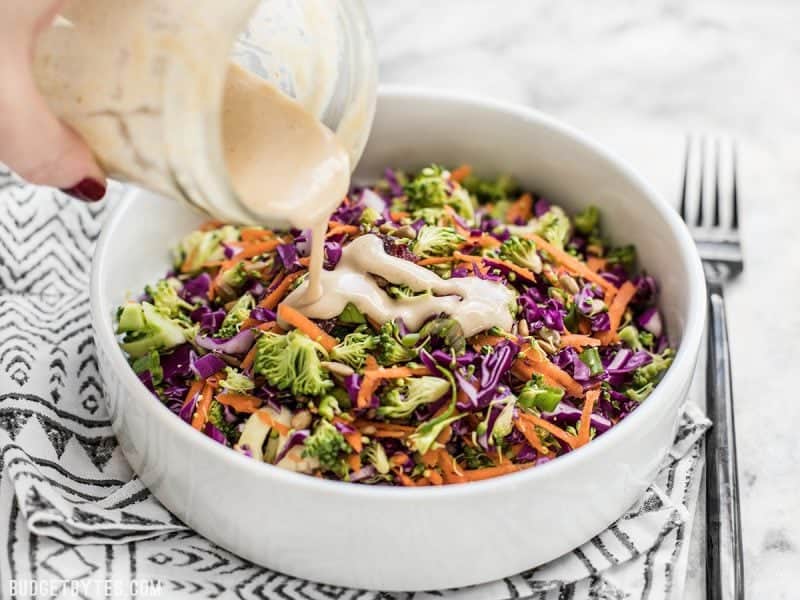
10 Easy DIY Salad Dressing Recipes:
Easy Homemade Balsamic Vinaigrette
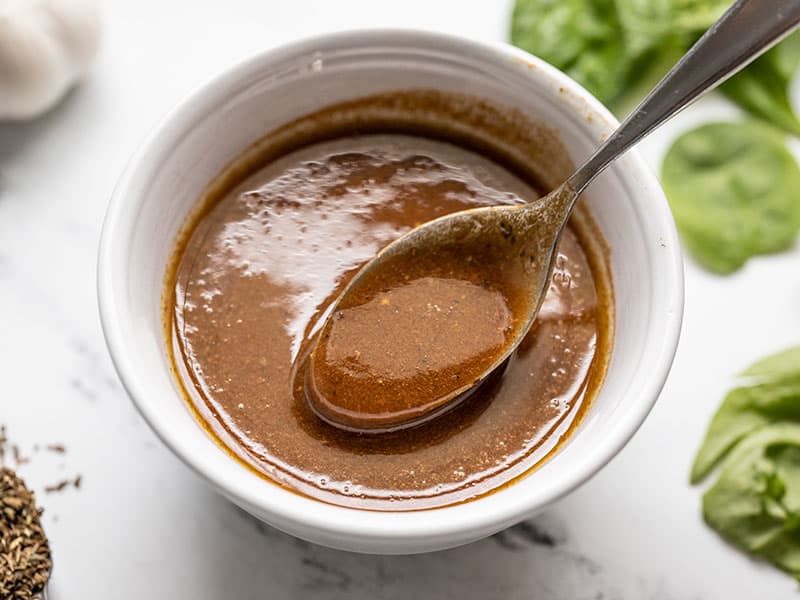
Homemade Ranch Dressing
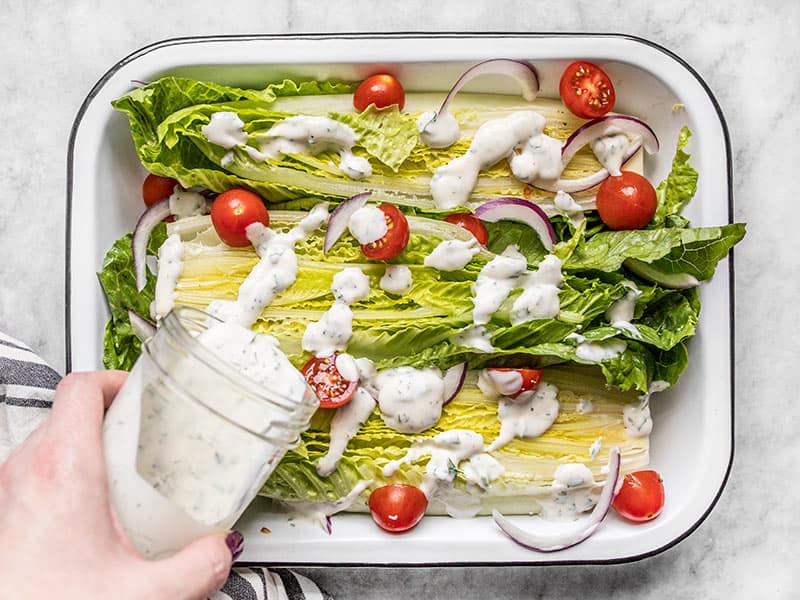
Peanut Lime Dressing
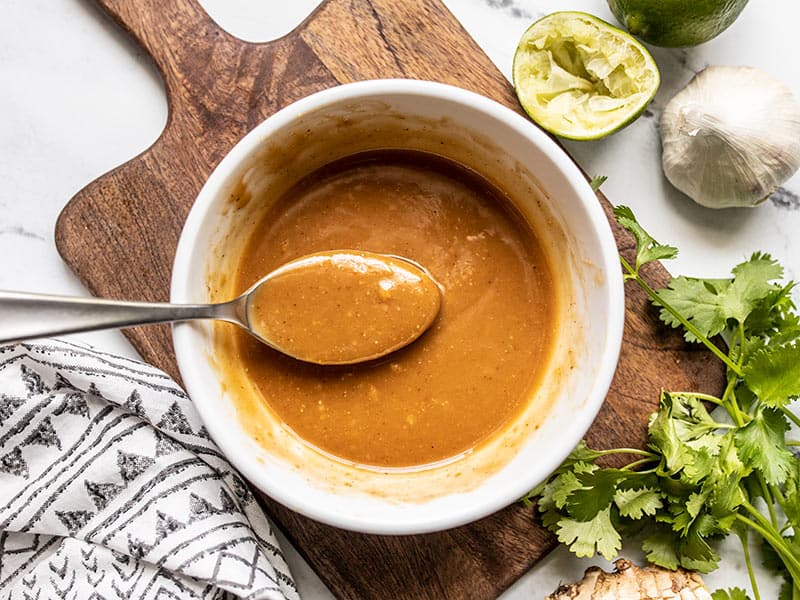
Homemade Italian Dressing
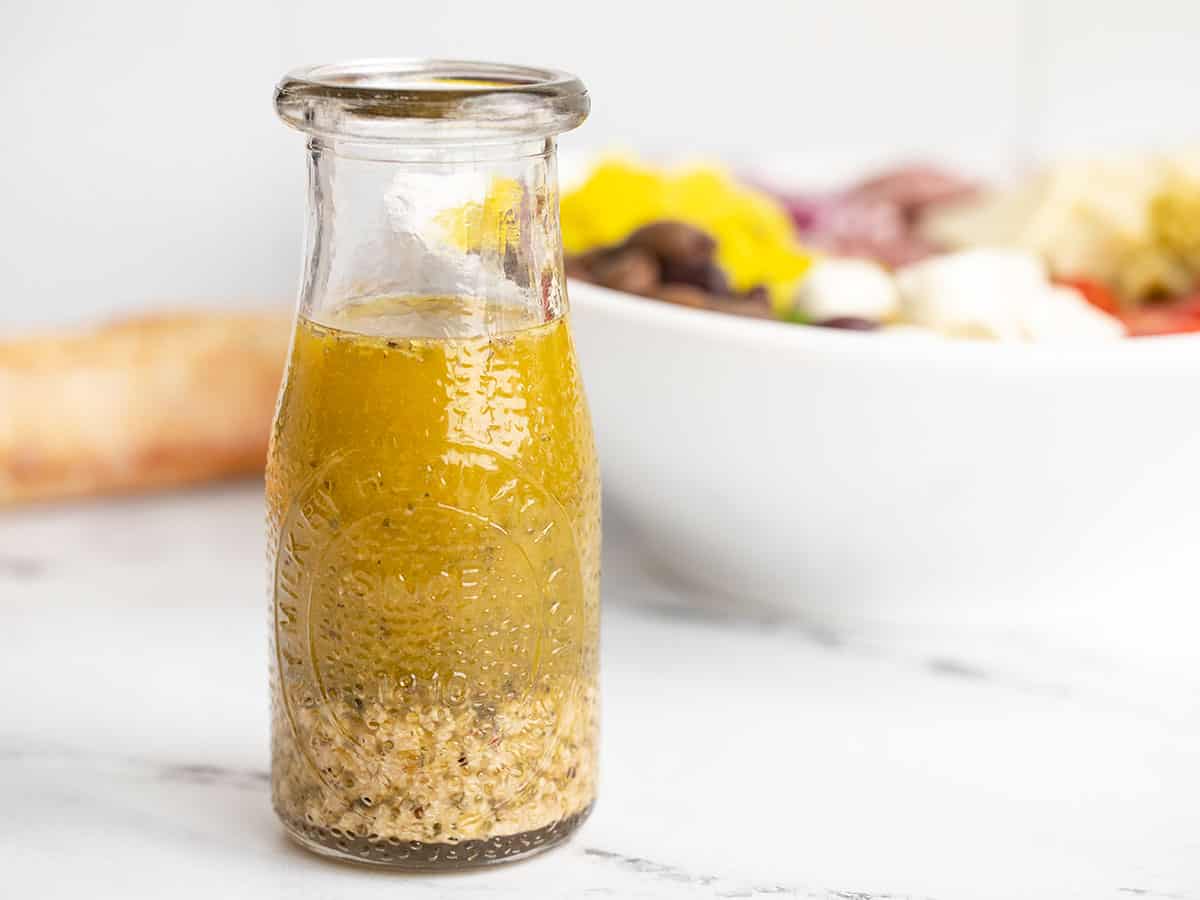
Tomato Basil Vinaigrette
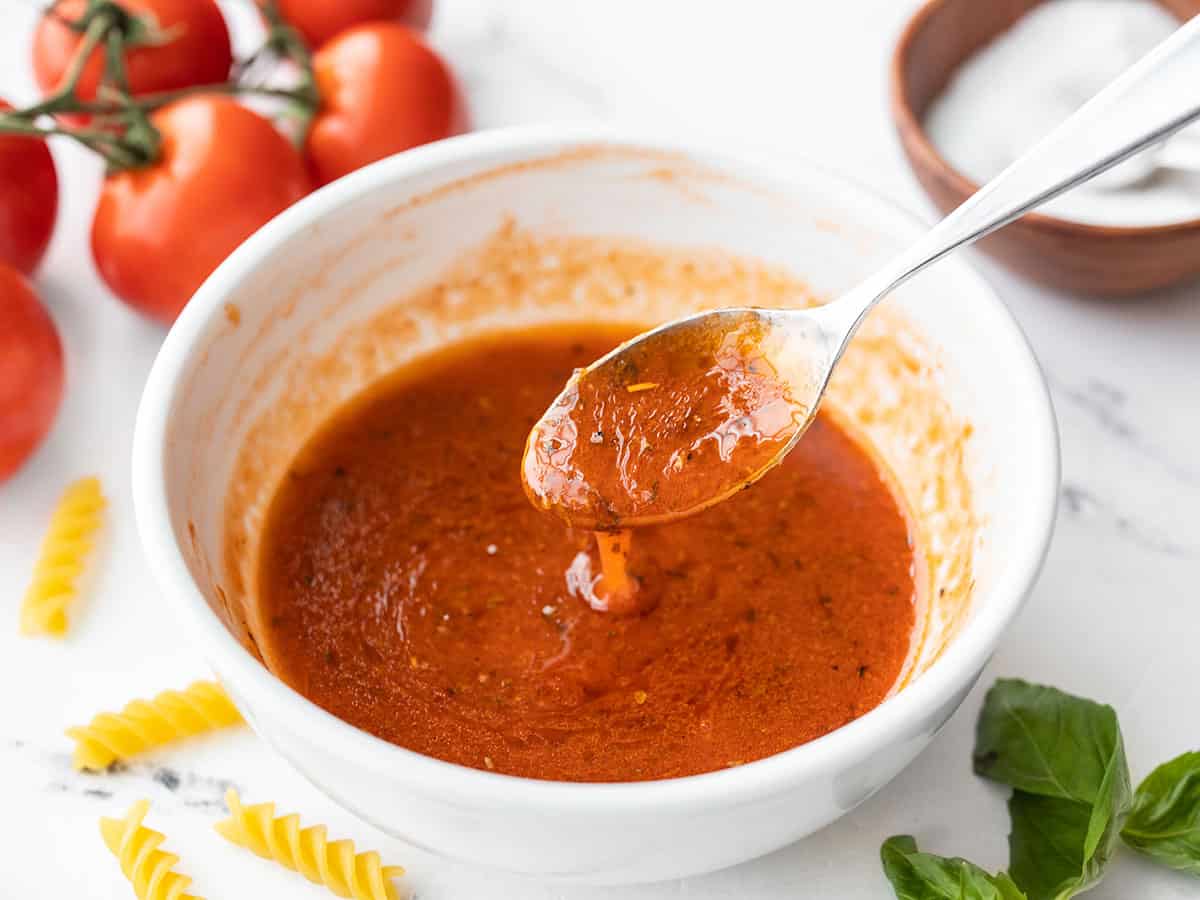
Lemon Tahini Dressing
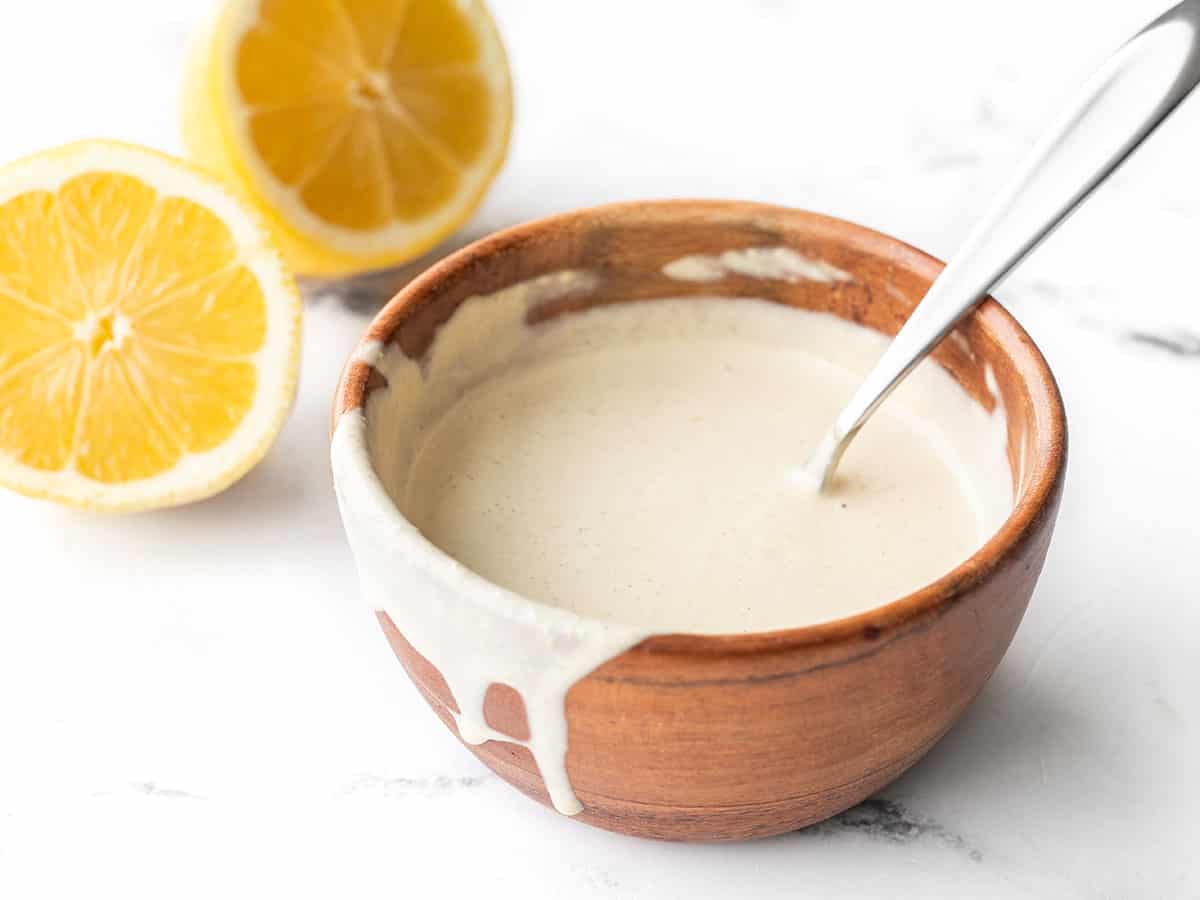
Honey Mustard Sauce
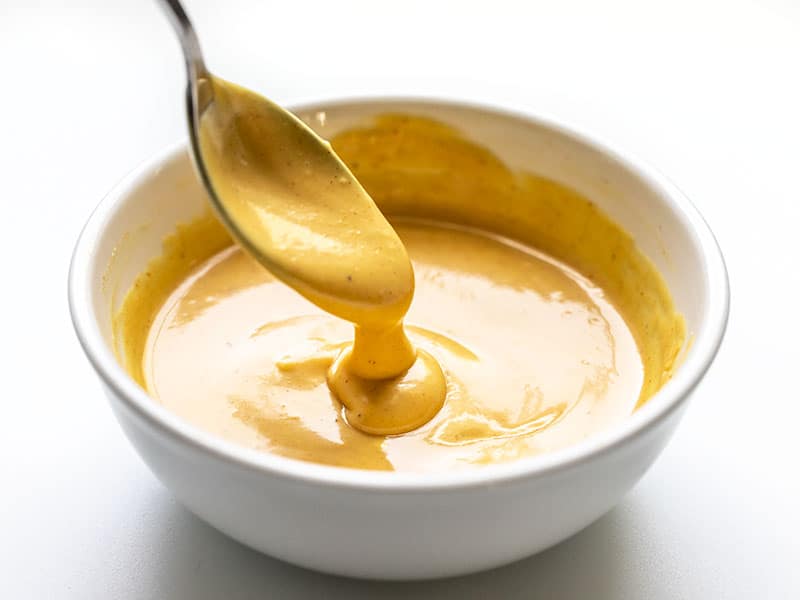
Sesame Ginger Dressing
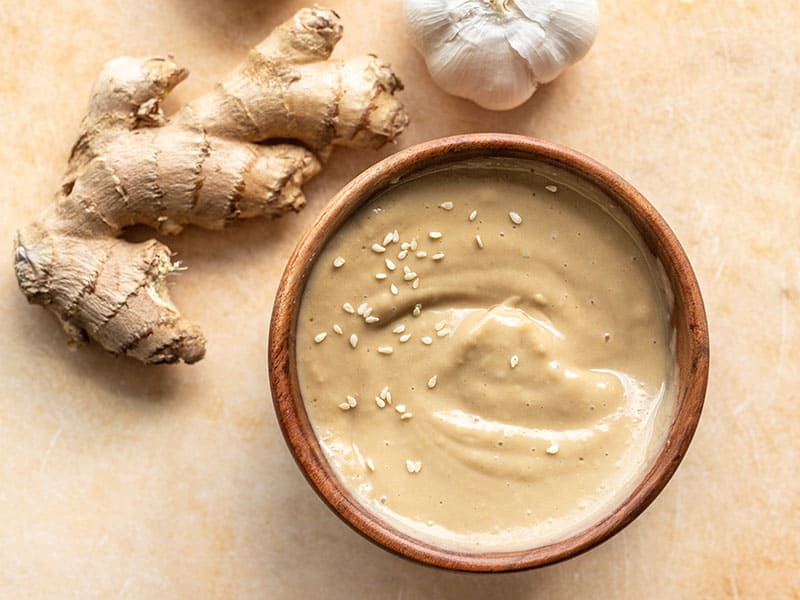
Lemon Dill Tahini Dressing
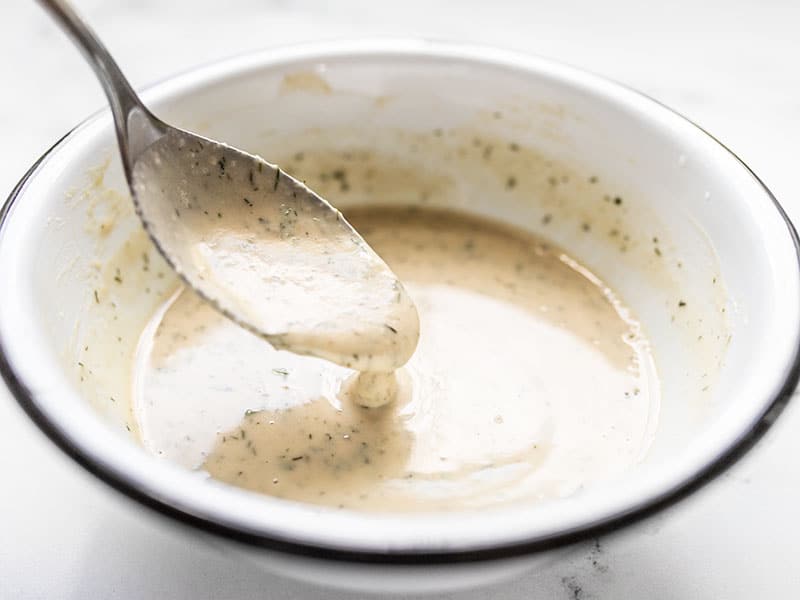
Creamy Avocado Dressing
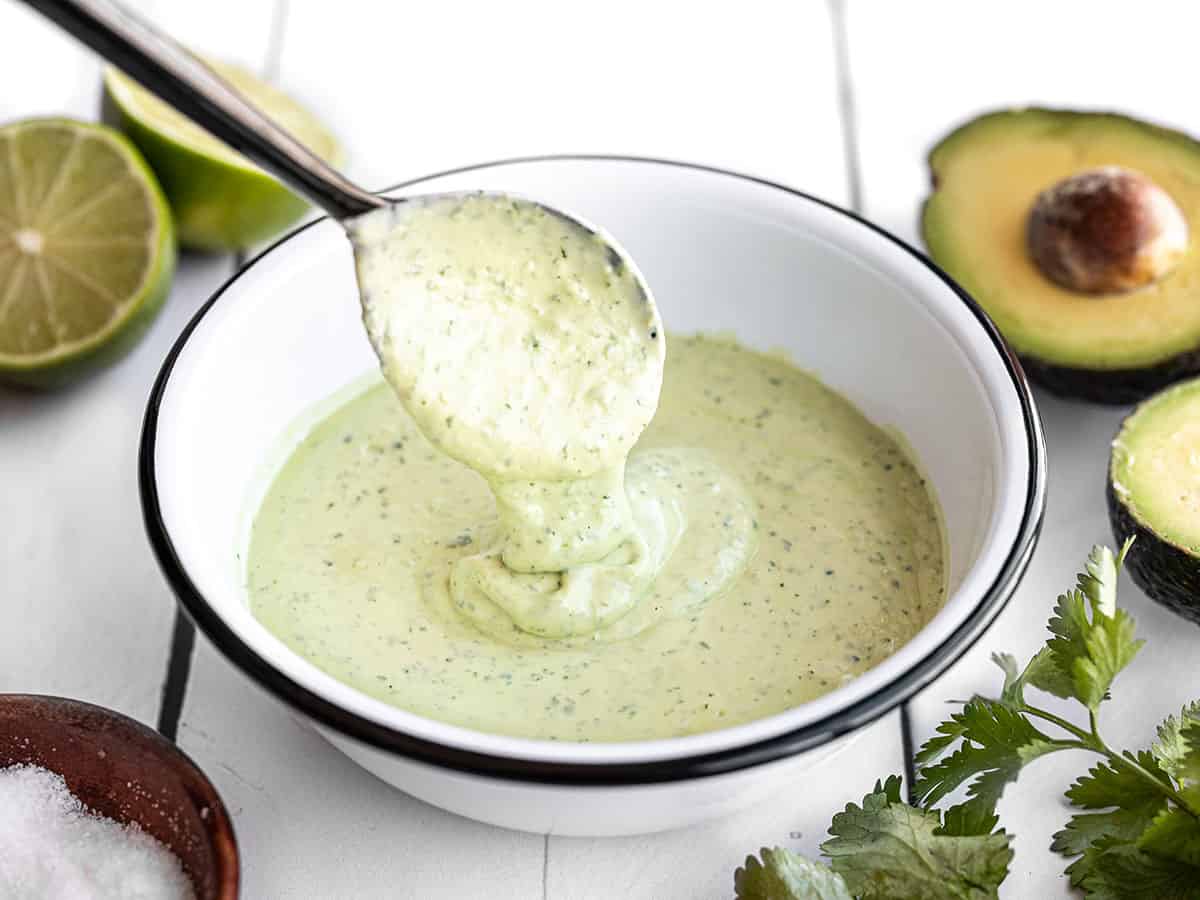
And here’s a little bonus recipe for you, just for fun! This Kale Pesto is great on pasta, sandwiches, and more!
Kale Pesto
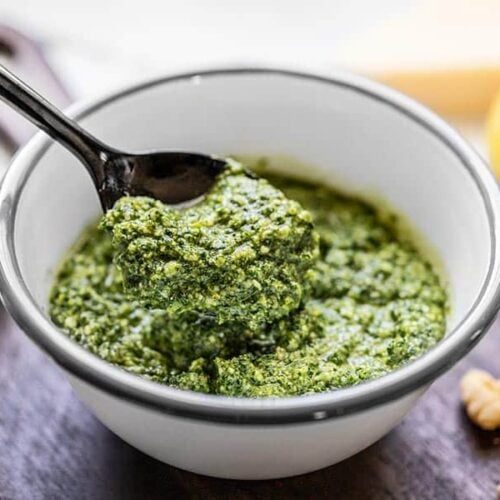
Ingredients
- 4 cups torn kale leaves ($1.06)
- 1/3 cup olive oil ($0.85)
- 1 fresh lemon ($0.37)
- 1 clove garlic ($0.08)
- 1/4 cup walnuts ($0.30)
- 1/3 cup Parmesan ($0.59)
- 1/2 tsp salt ($0.02)
- Freshly cracked pepper ($0.03)
Instructions
- Make sure your kale leaves are washed well, any excess water is drained away, and any hard stems removed. Zest and juice the lemon.
- Add the kale, 1/4 cup lemon juice, 1/2 tsp lemon zest, olive oil, garlic, walnuts, Parmesan, salt, and some freshly cracked pepper to a food processor. Process until the mixture is a fine textured paste. Taste and adjust the salt, pepper, or lemon if desired. If you want a runnier pesto for drizzling, add extra oil, or up to 2 Tbsp water.
See how we calculate recipe costs here.
Equipment
- Food Processor
- Grater
- Small Enamelware Bowl


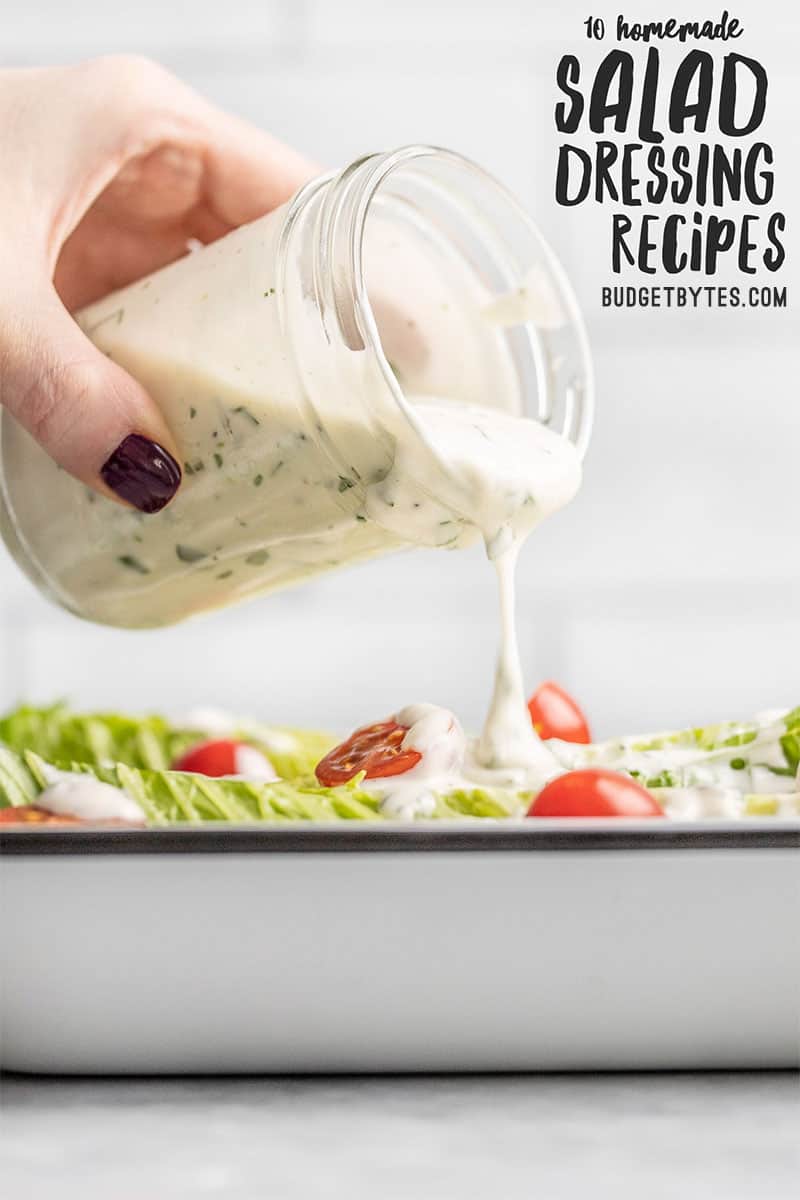
Definitely needed a good starting point, thank you! I made a home made zesty dressing using olive oil, Dijon mustard, challots, green onions, salt, pepper, garlic, lemon juice and a little sugar m, it was AMAZING
Amazing one!
Thanks for sharing.
A great resource! Thank you!
Do you have any recipes for shelf-stable salad dressings that don’t have to be refrigerated?
No, unfortunately anything that you make fresh that doesn’t have preservatives is going to need to be refrigerated. :(
Some good ideas here. And, home-made salad dressings are not full of additives and added sugar. It certainly is possible to make dressing for a single meal. Several times a week I make a big salad using (most often) a 100g sack of mixed lettuces plus whatever veggies I have and feel like cutting up. Using a half teaspoon measure, I make probably just over a tablespoon of plain-ish vinaigrette with oil (probably olive), vinegar (red wine, sherry, white wine, …), dijon, and maybe a bit of some Penzey’s spice mix (a friend gave us a superfluity and I’m trying to use them up) or an herb salt. That’s four half tsps of oil, a sloppy half tsp of vinegar (call it 1 tsp if you will), a dab of mustard from the end of a fork. Just over a tablespoon in total. That’s for a *big* salad for two, big as in filling your dinner plate. At TWO tablespoons per serving, your salads must be drowning in dressing!
I also love the dressing from the Kale ApplelDijon salad. I use it all the time!